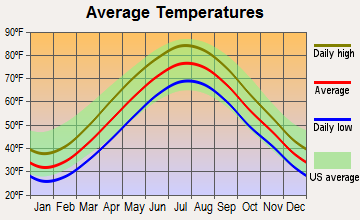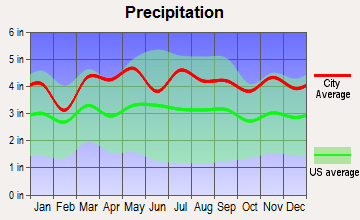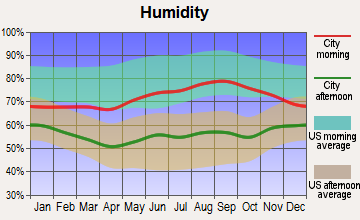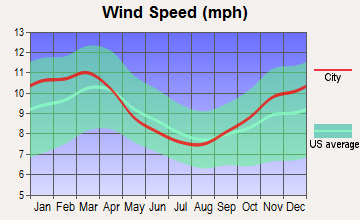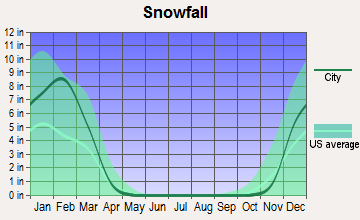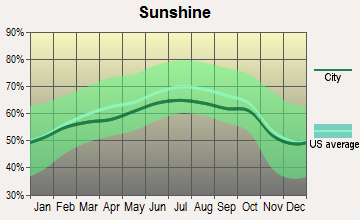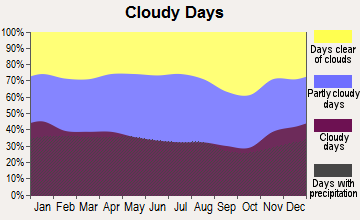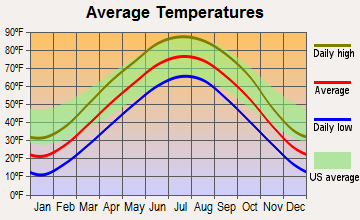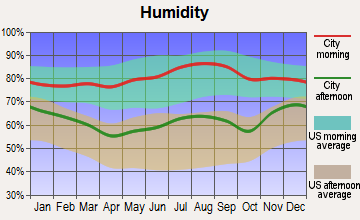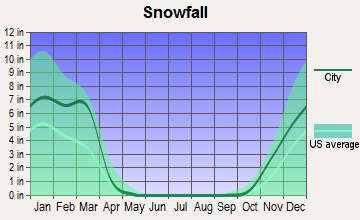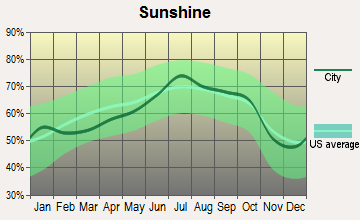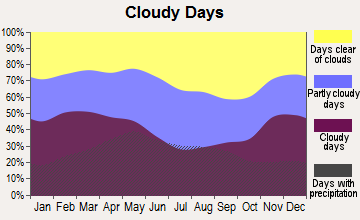 Manhattan, NY
Manhattan, NY
 Omaha, NE
Omaha, NE
Manhattan, NY and Omaha, NE are completely different in their way of life. Both have their appeal, however, striking contrasts abound in terms of cost of living, weather, culture, infrastructure, and economy. This comparison examines key aspects of life in these cities, aiding your decision about visiting or relocating.

 | Chicago/New York city similarities and differences (203 replies) |
 | Best cities for high end shopping destinations 2020 (1585 replies) |
 | Top 200 Most Influential Urban Areas in the USA (186 replies) |
 | City/Metro Homicides of 2022 (2524 replies) |
 | Where Would You Rather Live? Game (19455 replies) |
 | Time For Vacation!! Where Would You Rather VISIT Game (1928 replies) |
 Manhattan, NY and
Manhattan, NY and  Omaha, NE : 1,146.4 miles
Omaha, NE : 1,146.4 miles
Manhattan's population is larger by 233%. The population of Omaha has grown by 97,293 people (24.9%) during that time.
| Population | ||
| Type | Manhattan | Omaha |
|---|---|---|
| Population | 1,621,897 | 487,300 |
| Female / male percentage | 52.5% / 47.5%
|
50.2% / 49.8%
|
Manhattan has a higher crime rate than Omaha, owing primarily to its larger population. However, it's essential to note that different neighborhoods exhibit varied security levels in both cities. For tourists or folks contemplating a shift, it's always wise to research about the specifics of the neighborhood. NYPD has made significant improvements in managing crime in Manhattan over the years. Omaha has a relatively lower crime rate, but crime exists there too, especially in certain parts.
The cost of living in Manhattan is significantly higher than Omaha. Housing is one of the major contributors to this difference. On average, you might pay three to four times more for comparative housing in Manhattan than in Omaha. Groceries, utilities, and healthcare also tend to be much more expensive in Manhattan. In Omaha, the cost of living is below the national average, making it more attractive for those on a budget.
Both New York State and Nebraska have a progressive income tax structure. In New York, the rates range from 4% to 8.82%, but living in NYC adds an additional city tax. In Nebraska, the rates vary between 2.46% and 6.84%.
The average property tax rate in Manhattan is around 1.925%, which is lower than the national average. In contrast, the average property tax in Omaha is much higher, at approximately 2.10%.
New York City, including Manhattan, has a sales tax rate of 8.875%, which incorporates the New York State sales tax of 4%. Omaha, on the other hand, has a combined city and state sales tax rate of 7.5%.
| Income | ||
| Type | Manhattan | Omaha |
|---|---|---|
| Estimated median household income | $84,435 | $62,948 |
| Estimated per capita income | $76,589 | $38,062 |
| Cost of living index (U.S. average is 100) | 185.3 | 89.4 |
If you make $50,000 in Omaha, you will have to make $103,635 in Manhattan to maintain the same standard of living.
Manhattan is a densely populated island set within bustling New York Harbor, filled with towering structures and iconic landmarks. Omaha, in contrast, is a midwestern city situated along the Missouri River and surrounded by rolling farmland and plains.
| Geographical information | ||
| Type | Manhattan | Omaha |
|---|---|---|
| Land area | 23 sq. miles | 115.7 sq. miles |
| Population density | 70,629 people per sq. mile | 4,211.6 people per sq. mile |
 Manhattan, NY
Manhattan, NY
 Omaha, NE
Omaha, NE
Both Manhattan and Omaha boast an excellent education system. Manhattan, home to the prestigious Columbia University and New York University, has multiple high-ranking public and private schools. Omaha also has a well-regarded public and private school system and houses the University of Nebraska at Omaha. However, costs for education tend to be higher in Manhattan.
| Education level (25-year-olds and older) | ||
| Type | Manhattan | Omaha |
|---|---|---|
| Bachelor's degree or higher | 49.4% | 38.1% |
| Graduate or professional degree | 23.4% | 13.4% |
| High school or higher | 78.7% | 91.2% |
Manhattan has a robust economy, with dominant industries, including finance, healthcare, tech, and entertainment. Opportunities for high-income jobs are greater in Manhattan, yet job competition is fierce. Omaha has a stable economy with notable industries being healthcare, finance, and transportation. The unemployment rates are usually lower in Omaha than Manhattan.
In Manhattan, some of the largest employers include JPMorgan Chase, Citi, Verizon, and Mount Sinai Health System. Omaha is home to several Fortune 500 companies, with the biggest employers being Berkshire Hathaway, Union Pacific Railroad, and the University of Nebraska Medical Center.
In Manhattan (New York County), 83.9% voted for Democrats and 14.9% for Republicans in 2012 Presidential Election. In Omaha (Douglas County), 47.5% voted for Democrats and 50.6% for Republicans.
The weather in Manhattan, NY, and Omaha, NE, vary significantly. Manhattan has a humid subtropical climate with four distinct seasons, including cold, wet winters and hot, humid summers. Conversely, Omaha experiences a humid continental climate, with extremely cold winters with heavy snowfall and hot, muggy summers.
| Weather and climate | ||
| Type | Manhattan | Omaha |
|---|---|---|
| Temperature - Average | 54.6°F | 50.6°F |
| Humidity - Average morning or afternoon humidity | 67.4% | 75.9% |
| Humidity - Differences between morning and afternoon humidity | 30% | 35% |
| Humidity - Maximum monthly morning or afternoon humidity | 77% | 87% |
| Humidity - Minimum monthly morning or afternoon humidity | 47% | 52% |
| Precipitation - Yearly average | 49.6 in | 30 in |
| Snowfall - Yearly average | 57.4 in | 57.2 in |
| Clouds - Number of days clear of clouds | 17.8% | 18.4% |
| Sunshine amount - Average | 60.2% | 66.7% |
| Sunshine amount - Differences during a year | 20% | 27% |
| Sunshine amount - Maximum monthly | 64% | 74% |
| Sunshine amount - Minimum monthly | 44% | 47% |
| Wind speed - Average | 6.7 mph | 10.8 mph |
| Natural disasters | ||
| Type | Manhattan | Omaha |
|---|---|---|
| Tornado activity compared to U.S. average | 59.1% | 191.9% |
| Earthquake activity compared to U.S. average | 31.1% | 415.1% |
| Natural disasters compared to U.S. average | 18% | 21% |
In Manhattan, public transit is omnipresent and efficient with subways, buses, and ferries, making owning a car unnecessary. Omaha is a vehicle-centric city and, while it does have a public transit system, commuting usually relies much more on driving.
| Transport | ||
| Type | Manhattan | Omaha |
|---|---|---|
| Amtrak stations | 0 | 1 |
| Amtrak stations nearby | 3 | 1 |
| FAA registered aircraft | 2 | 405 |
| FAA registered aircraft manufacturers and dealers | 0 | 24 |
Real estate in Manhattan is world-renowned but also infamous for its high prices. It offers options from luxury apartments to historic brownstones. In contrast, Omaha's real estate is much more affordable, with a wide variety of homes, from downtown apartments to suburban houses.
Manhattan has a variety of vibrant neighborhoods, such as the bustling Times Square, the artsy Greenwich Village, and the residential Upper East Side. Omaha also provides a wide range of neighborhoods fitting various lifestyles, including trendy Downtown, historic Old Market, and serene West Omaha.
| Houses and residents | ||
| Type | Manhattan | Omaha |
|---|---|---|
| Houses | 798,144 | 212,802 |
| Average household size (people) | 2 | 2.5 |
| Houses occupied | 738,644 (92.5%) | 201,469 (94.7%) |
| Houses occupied by owners | 148,695 (20.1%) | 117,404 (58.3%) |
| Houses occupied by renters | 589,949 (79.9%) | 84,065 (41.7%) |
| Median rent asked for vacant for-rent units | $1,690 | $892.09 |
| Median price asked for vacant for-sale houses and condos | $3,393,315 | $261,376 |
| Estimated median house or condo value | $940,900 | $211,900 |
| Median number of rooms in apartments | 3.2 | 4 |
| Median number of rooms in houses and condos | 4 | 7.1 |
| Renting percentage | 77.2% | 41.7% |
| Housing density (houses/condos per square mile) | 34,757 | 1,839.2 |
| Household income disparities | 47.8% | 45.6% |
| Housing units without a mortgage | 1,104 (40.3%) | 2,417 (2.9%) |
| Housing units with both a second mortgage and home equity loan | 13 (0.5%) | 7,375 (8.9%) |
| Housing units with a mortgage | 1,636 (59.7%) | 80,503 (97.1%) |
| Housing units with a home equity loan | 140 (5.1%) | 335 (0.4%) |
| Housing units with a second mortgage | 140 (5.1%) | 9,200 (11.1%) |
| Housing units lacking complete kitchen facilities | 2% | 1.6% |
| Housing units lacking complete plumbing facilities | 1.7% | 0.7% |
Manhattan is famous for its finance and tech industries, with a multitude of career opportunities in these fields, among others. On the other hand, Omaha is a significant hub for finance, insurance, and healthcare occupations, with plenty of potential for career growth within those sectors.
Both Manhattan and Omaha offer excellent healthcare services. Manhattan houses world-class institutions like Mount Sinai and NYU Langone. Omaha boasts the highly rated Nebraska Medical Center and Children’s Hospital and Medical Center. Yet, healthcare costs tend to be higher in Manhattan.
| Health (county statistics) | ||
| Type | Manhattan | Omaha |
|---|---|---|
| General health status score of residents in this county from 1 (poor) to 5 (excellent) | 3.6 | 3.5 |
| Average weight of females (lbs) | 150.1 lbs | 167.4 lbs |
| Average weight of males (lbs) | 180.1 lbs | 204 lbs |
| Residents visited a dentist within the past year | 77.7% | 71.1% |
| Residents exercised in the past month | 79% | 73.8% |
| Adult residents drank alcohol in the past 30 days | 84% | 59.5% |
| Residents smoked 100+ cigarettes in their lives | 46.3% | 43% |
Manhattan's infrastructure is iconic, including its towering skyscrapers, historic buildings, and expansive subway system. In contrast, Omaha's infrastructure is more suburban, with sprawling neighborhoods and city parks. Both cities, however, have invested in eco-friendly initiatives.
| Infrastructure | ||
| Type | Manhattan | Omaha |
|---|---|---|
| TV stations | 30 | 19 |
| Nuclear power plants nearby | 0 | 1 |
Manhattan offers an impressive array of international cuisine, a vibrant nightlife, and is known as one of the world's top cultural hubs. Omaha also offers a varied dining scene, city-wide cultural events, but on a smaller, more intimate scale.
Manhattan serves as home to several professional sports teams, including the New York Yankees, Knicks, and Jets. In contrast, while Omaha does not host any major league teams, it does embrace college sports, especially the Omaha Mavericks and the Creighton Bluejays.
